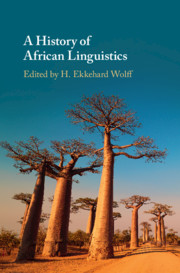Book contents
- A History of African Linguistics
- A History of African Linguistics
- Copyright page
- Contents
- Figures
- Tables
- Contributors
- Preface
- Abbreviations and Acronyms
- 1 The History of African Linguistics
- 2 Western Europe: African Linguistics and the Colonial Project
- 3 African Linguistics in Central and Eastern Europe, and in the Nordic Countries
- 4 African Linguistics in North Africa
- 5 The Study of African Languages and Linguistics in North-Eastern Africa
- 6 African Linguistics in Southern Africa
- 7 African Linguistics in Eastern Africa
- 8 African Linguistics in Official English-Speaking West Africa
- 9 African Linguistics in Official French-Speaking West and Central Africa
- 10 African Linguistics in Official Portuguese- and Spanish-Speaking Africa
- 11 African Linguistics in the Americas
- 12 African Linguistics in Asia and Australia
- References
- Index – African Languages
- Index – Countries
- Index – Keywords
- Index – Persons
- References
References
Published online by Cambridge University Press: 31 May 2019
- A History of African Linguistics
- A History of African Linguistics
- Copyright page
- Contents
- Figures
- Tables
- Contributors
- Preface
- Abbreviations and Acronyms
- 1 The History of African Linguistics
- 2 Western Europe: African Linguistics and the Colonial Project
- 3 African Linguistics in Central and Eastern Europe, and in the Nordic Countries
- 4 African Linguistics in North Africa
- 5 The Study of African Languages and Linguistics in North-Eastern Africa
- 6 African Linguistics in Southern Africa
- 7 African Linguistics in Eastern Africa
- 8 African Linguistics in Official English-Speaking West Africa
- 9 African Linguistics in Official French-Speaking West and Central Africa
- 10 African Linguistics in Official Portuguese- and Spanish-Speaking Africa
- 11 African Linguistics in the Americas
- 12 African Linguistics in Asia and Australia
- References
- Index – African Languages
- Index – Countries
- Index – Keywords
- Index – Persons
- References
- Type
- Chapter
- Information
- A History of African Linguistics , pp. 251 - 332Publisher: Cambridge University PressPrint publication year: 2019



